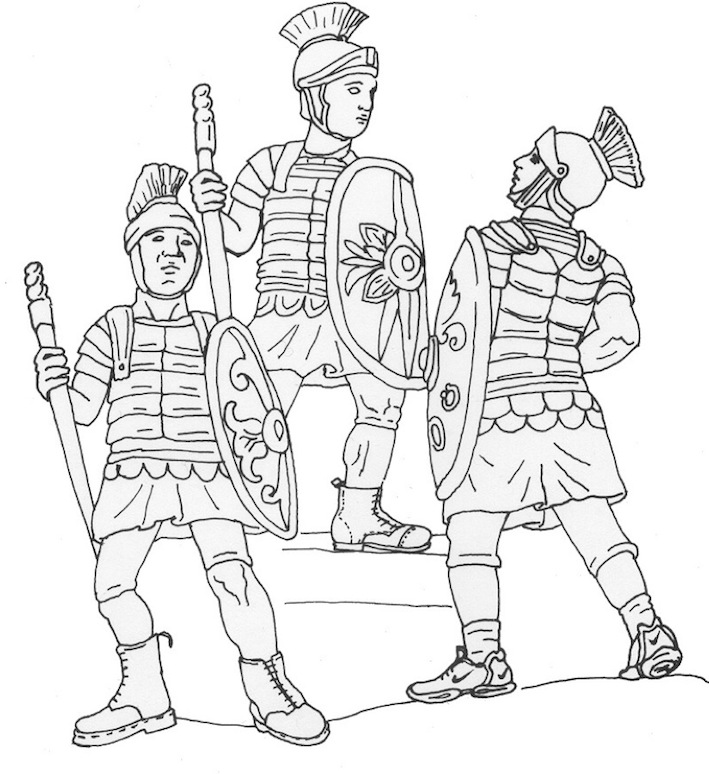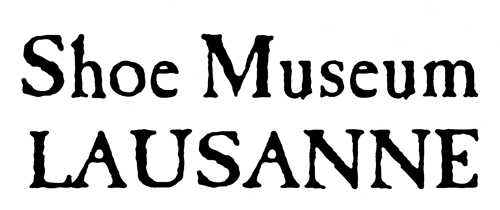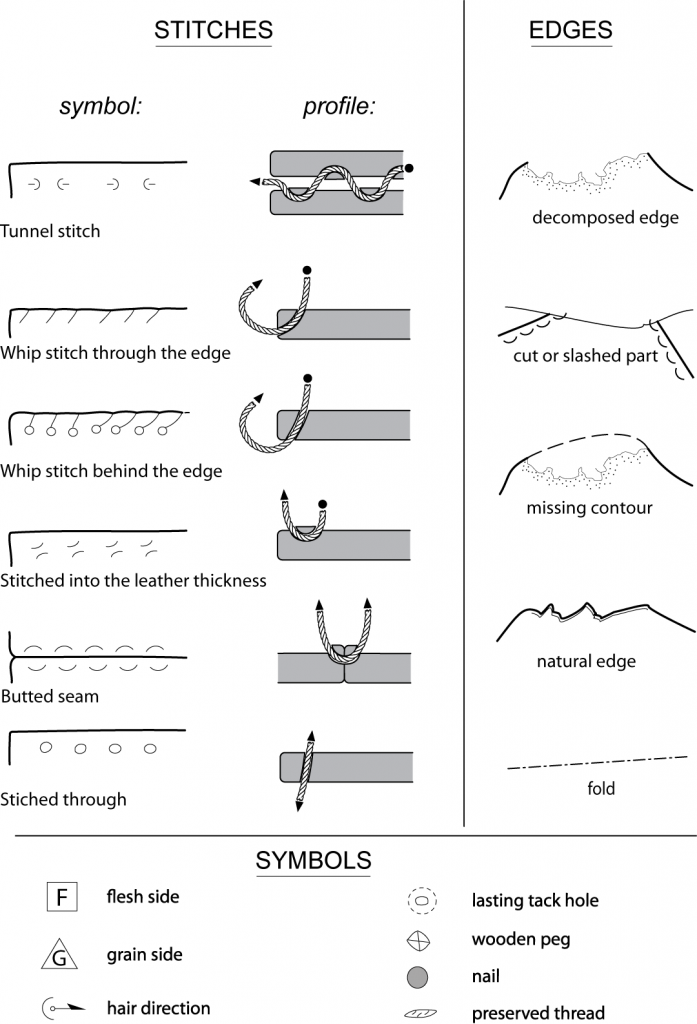Our collection is entirely made of reconstructions based on practical research, a guarantee of their historical authenticity. The reconstruction is the final stage in the scientifically based research and analysis of archaeological artefacts. The aim of such reconstructions is to understand the object.
Investigative cleaning and preliminary registration
Comparable to forensic methods used by the scientific police, we first look to secure all possible traces in order to reconstitute the steps used to make the original. Our first job is deciphering information contained in the objects and the fragments.
The investigation begins while cleaning the fragments. Fragile connections that could not withstand even the most careful manipulations are secured by documentation on the spot. Each fragment is drawn according to a special drawing and registration method based on an established norm.
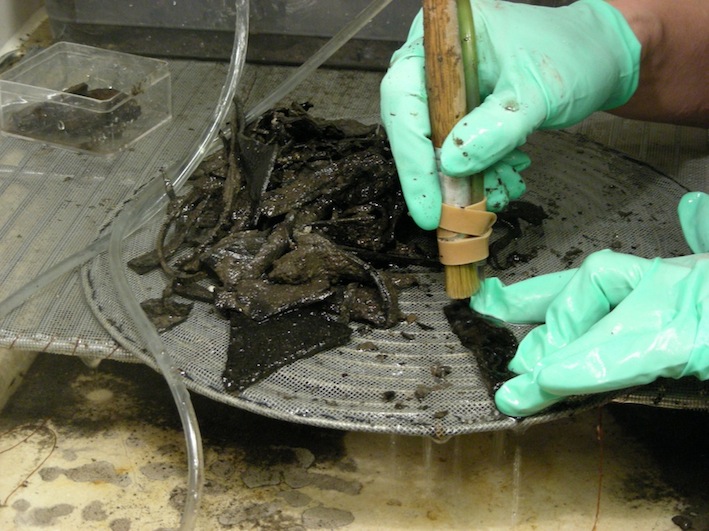
Each fragment is systematically registered and annotated with observations about the animal origin or other particular signs. In this way we create a preliminary catalogue in which the fragments are not necessarily in represented in their logical order.
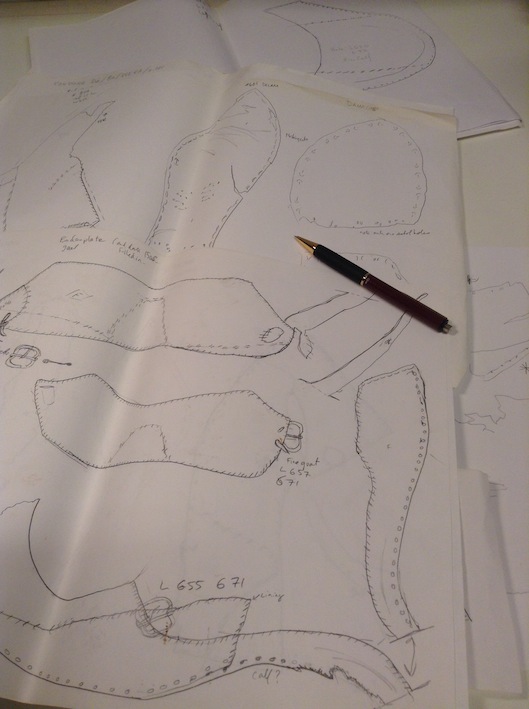
Three dimensional models
The pieces of the puzzle are cut out of the registration drawings. This allows minimal manipulation of fragile originals and we can construct three dimensional paper models called “ghost shoes”. Missing pieces can be determined. These models are the key to recreate the cutting patterns for the reconstruction.
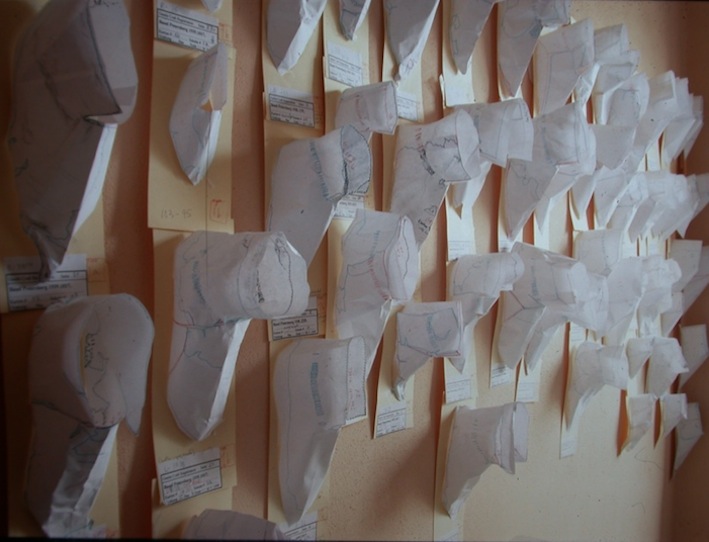
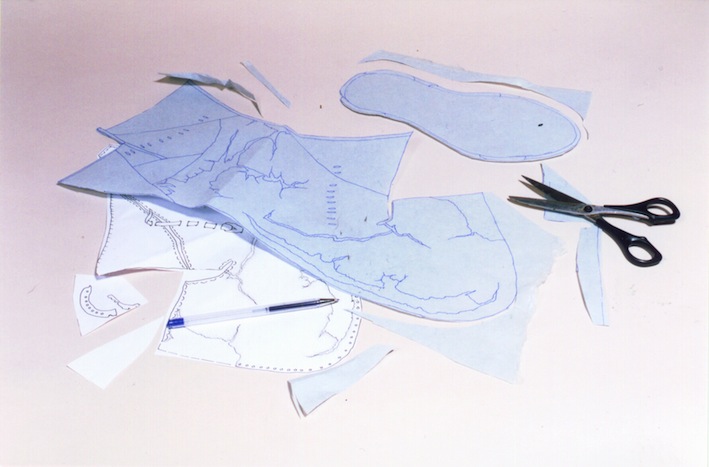
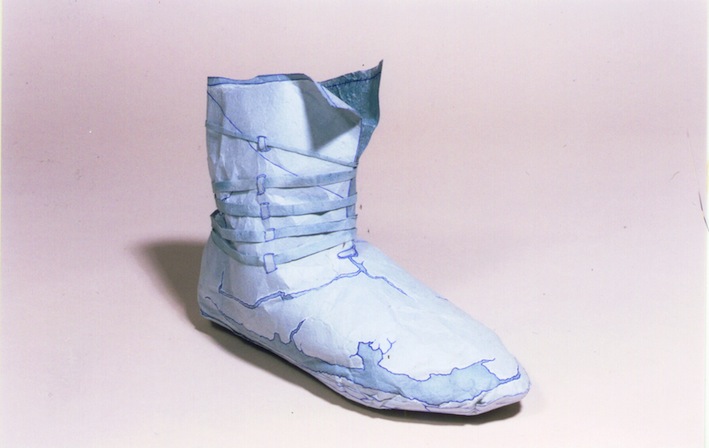
The reconstruction
A faithful reconstruction demands the use of means of production available at the time. In other words, Roman reconstructions need to be made with roman tools. For this we also need to do a detailed research on ancient tools and technical means.
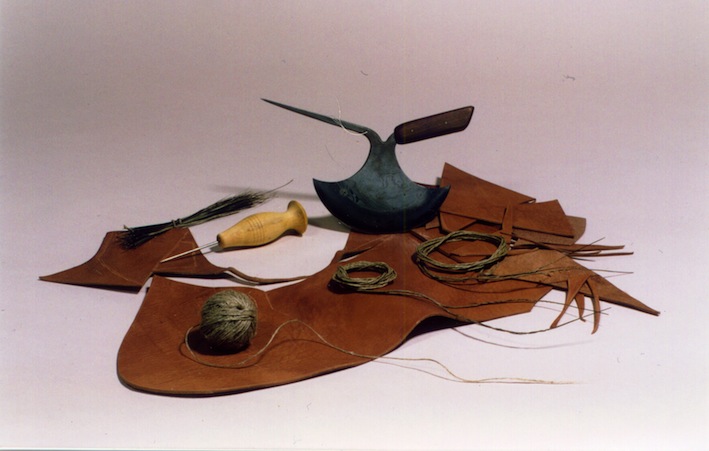
The art of the calceologist is to decipher information contained in footwear. The reconstruction is rarely a goal in itself and more so a mean to acquire knowledge. After determining production methods there are still questions about their practical use.
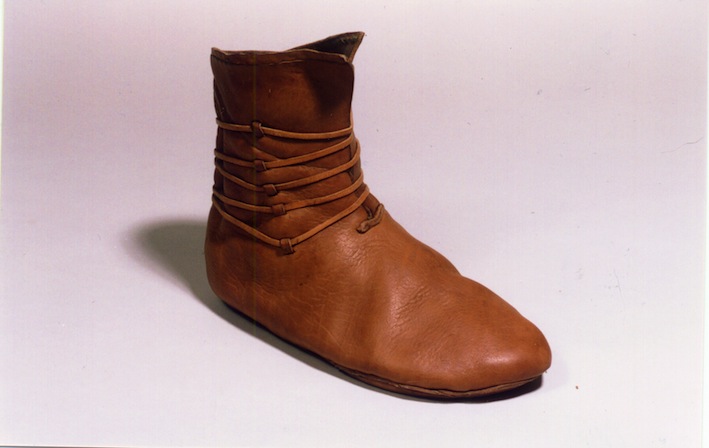
The cryptology of shoes
Some reconstructions undergo harsh tests in all weather and soil conditions im some cases extremely realistically. Wear marks can then be compared with those on original finds.
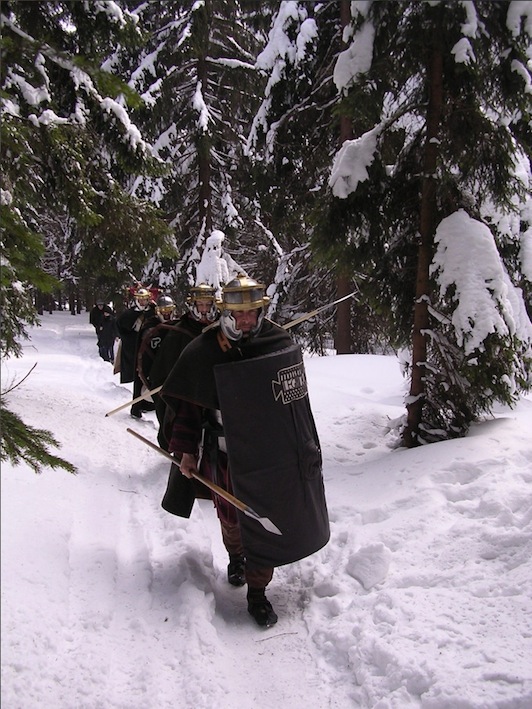
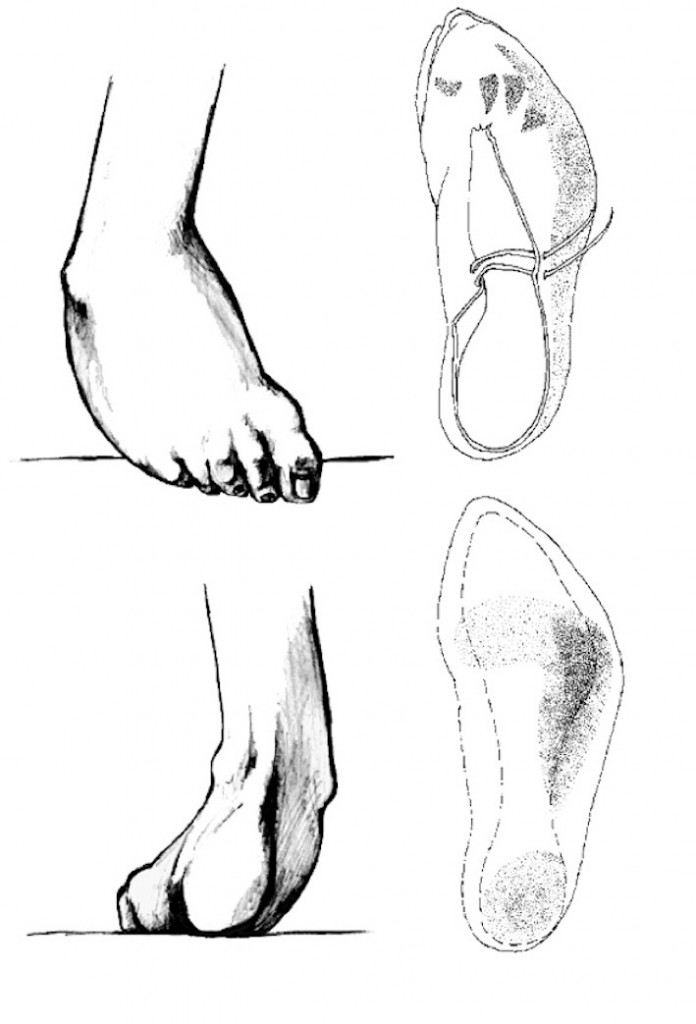
The shoe, being a very personal object, can occasionally contain marks of its wearer. An example is this atypical wear pattern from a clubfoot dating back to the 16th century.
In the past and in the present shoe fashion and styles change rapidly. Try to remember the shoe fashions of 10 years ago. The study of the evolution of shoes allows avoiding anachronism such as Roman soldiers with DocMartens® and Nikes® on their feet.
